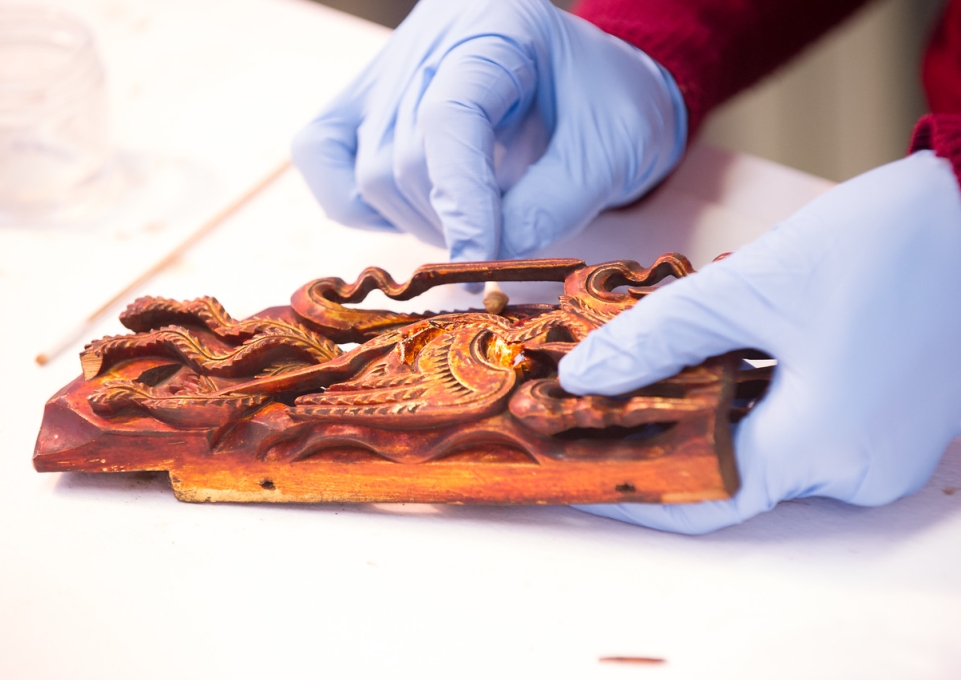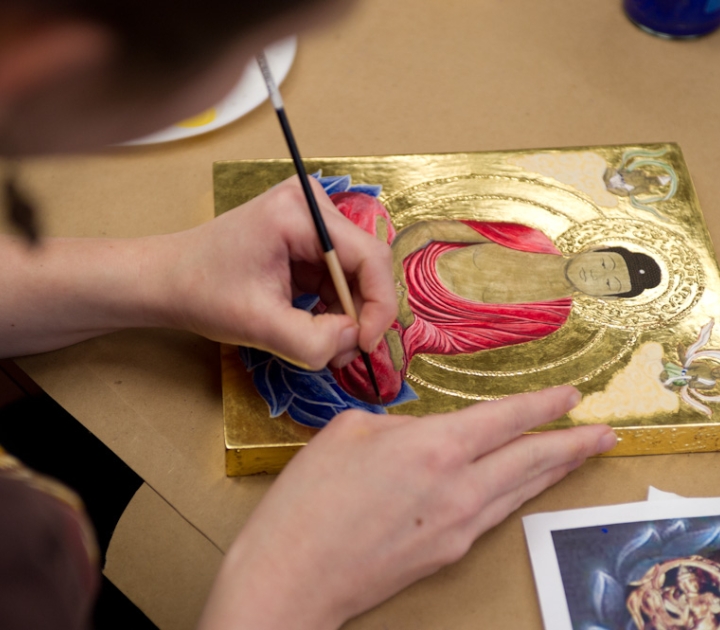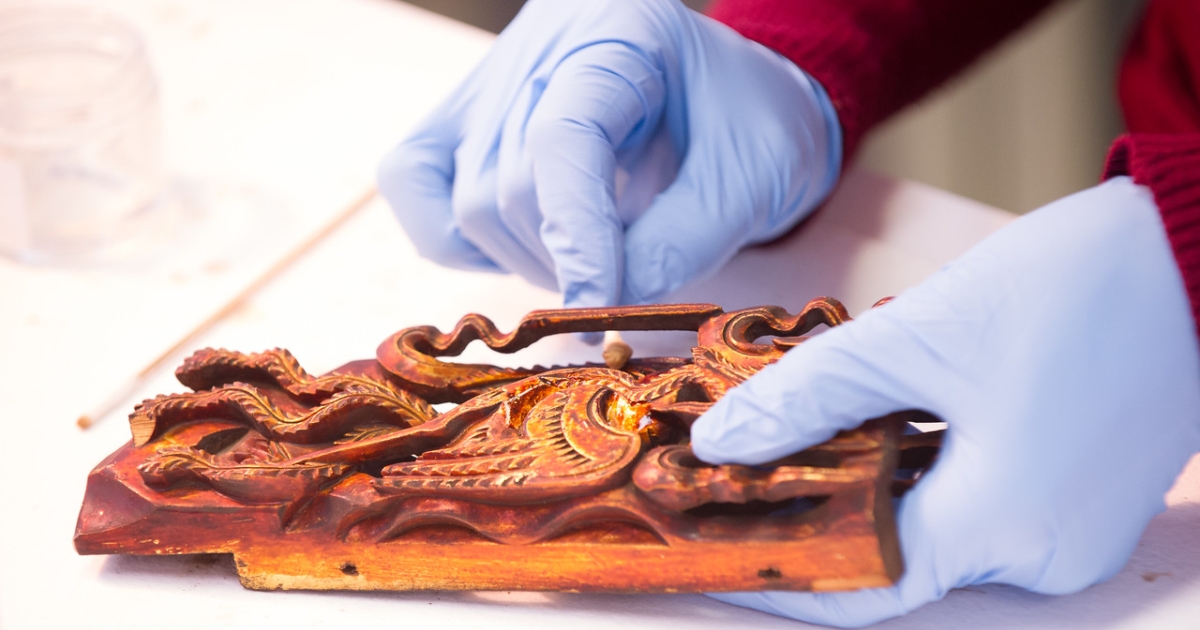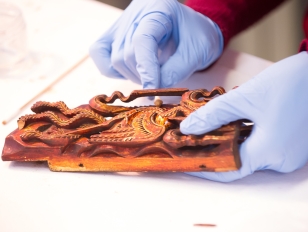
Graduates of the Patricia H. and Richard E. Garman Art Conservation Department at Buffalo State College have historically found professional positions with esteemed institutions such as the Metropolitan Museum of Art, the Smithsonian Institution, and the Library of Congress.
Students who complete the program in 2025 and beyond will be poised for even greater job prospects, thanks to a newly approved master of arts/master of science dual degree program. Buffalo State is now the only college or university in North America to offer a dual graduate degree in conservation.
“The dual degree shows the strength of the scientific piece of the program,” said Patrick Ravines, professor and director of the Garman Art Conservation program. “We always knew that students had to be able to access both sides of their brains to excel in this profession. Now the degree will show it, too.”
Starting in fall 2022, students entering the three-year program will earn an M.A. in the conservation of art and cultural heritage and an M.S. in conservation science and imaging. Previously, students earned an M.A. in art conservation with a certificate of advanced study.
The New York State Education Department approved the dual degree in October 2021; the National Association of Schools of Art and Design (NASAD) accredited it in May 2022.
“To make this happen, the department took on a total course review,” Ravines said.
The M.A. portion of the dual degree is focused on conservation treatment theory, practice, and ethics. Meanwhile, the M.S. is focused on the sciences—chemistry, physics, and materials science—and imaging—optics, industrial photography, and computational photography.
Buffalo State is now the only college or university in North America to offer a dual M.A./M.S. degree in art conservation.

“The change definitely makes our program more competitive and recognizes the enormous amount of work our students put into the program,” said Meredeth Lavelle, program manager, noting that Buffalo State requires students to complete 77 credit hours, compared with most master’s programs, which require only 30.
“Out of the four American programs that offer a graduate degree in conservation, we are the only one now offering a dual M.A./M.S. degree,” Lavelle said. “We hope this will make our graduates more easily employable and will help raise their overall salaries.”
The new degree plays to the strengths of the art conservation faculty, Ravines noted.
For instance, Rebecca Ploeger, associate professor of conservation science of organic materials, holds a master’s degree in chemical engineering and a doctorate in chemical science. Her current research focuses on the development of a new consolidating adhesive for paintings and polychrome objects. Aaron Shugar, Mellon Professor of Conservation Science, has traveled around the globe for work in the analysis of archaeological metals and glass. And Jiuan Jiuan Chen, associate professor of conservation imaging and one of the world’s leading conservation imaging experts, has a strong interest in using ultraviolet radiation in imaging, which led to the award of a U.S. patent for a fluorescent color calibrator.
Founded in 1970 in Cooperstown, New York, as a graduate program affiliated with the State University of New York College at Oneonta and the New York State Historical Association in Cooperstown, the art conservation program moved to the Buffalo State campus in 1987.
A fiercely competitive program that admits only 10 students a year, it requires applicants to have a facility with the hard sciences and an abiding understanding of fine art and cultural heritage.
In their first year, students receive a broad background in conservation treatment, imaging, and science. In the second year, they focus on one of four specializations—objects, paintings, paper and its subspecialties, or book and photograph conservation. Students spend their third year in an internship at a museum, library, archive, or other cultural heritage institution under the mentorship of a professional conservator.
“This new degree meets the educational goals and career objectives of providing the arts, humanities, and cultural heritage sectors with well-educated, highly qualified, and responsible conservators,” Ravines said. “Our graduates will be ready to fill higher-level positions as they enter the field with a dual master’s degree.”



